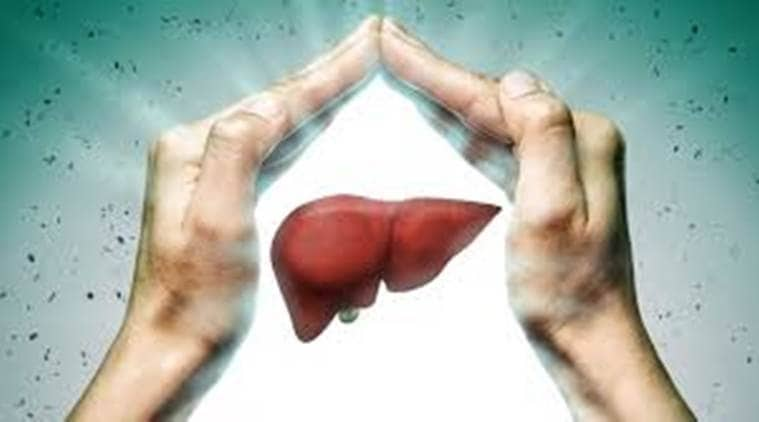ALF, or 'liver attack', probably takes a much more drastic downhill course with multi-organ dysfunction and mortality than a heart attack if left untreated.

“Ode to the Liver” by Nobel laureate Pablo Neruda is considered a masterpiece. It is believed that he penned it after an encounter with liver researcher Hector Orrego. Neruda refers to the liver as “noiseless machinery,” knowing that if “one tiny cell, be in error or one fibre be worn in your labour and the pilot flies into the wrong sky, the astronomer loses a planet.” At the end of the ode, the author underlines the tight relationship between life and function of the liver: “I love life: Do not betray me! Work on!/Do not arrest my song.”
In nutshell, liver loss is a life lost! The disease that matches this concept is none other than acute liver failure (ALF). A person who leads a normal life and is not known to have liver disease previously, abruptly develops yellowing of eyes and urine, vomiting, clouding of thought processes and sinks into coma. This is the dreadful syndrome ALF. A life-threatening illness, a previously normal liver fails within days to weeks.
All of the more than 100 vital functions that it performs including filtering, cleansing, manufacturing and digestive functions come to a standstill in ALF. Sudden loss of synthetic and detoxification function of the liver results in yellowing of eyes, urine and skin (jaundice), brain dysfunction, bleeding due to defective blood clotting mechanisms and multi-organ failure. Literally a “harthal (strike)” of the liver! Though the liver is the organ which shuts down, other organs suffer as well.
The public is aware of what a heart attack is all about; ALF can be called a ‘liver attack’. It probably takes a much more drastic downhill course with multi-organ dysfunction and mortality than a heart attack if left untreated or sub-optimally treated, explained Dr Harikumar R Nair, MD, DM, MRCP (UK), FRCP (Edin), senior consultant, hepatologist and liver transplant physician, Gleneagles Global Health City, Chennai and Kinder Multispecialty Hospital, Kochi.
Causes of ALF
Viruses
Common causes are infection with liver directed viruses (Hepatotropic viruses). Hepatitis B virus, Hepatitis A virus and Hepatitis E virus are common causes of ALF India. Rarely, viruses which cause chicken pox can induce acute liver failure, so are viruses like Herpes simplex virus (HSV) and Cytomegalo virus (CMV).
Drug-induced liver injury
This can happen with modern medicines to Sidha, Unani, Ayurveda and non-Ayurvedic/pseudo-Ayurvedic herbal remedies. There is a clear difference between modern medicines inducing ALF versus complementary and alternate medical systems. Since modern drugs are put through rigid research/clinical trials before marketing, the proportion and severity of liver damage is known, while in alternate systems, this risk is not known since they reach market without undergoing clinical trials. Massive advertisement gimmicks in the press and digital media happen to be the sole basis of sales, not scientific evidence, in the latter case.
Among modern medical drugs, anti-tuberculous medicines, cholesterol lowering medicines (statins), Methotrexate used in skin disorders, cancer chemotherapeutic agents are among the many available. All these prescribed medicines are put through various phases of drug trials, so that by the time the it marketed, the side-effects expected are also known. In view of proven and substantial efficacy, we tend to use some medicines which are known to contain a risk of liver injury in a small proportion. If a medicine is known to have liver toxicity, the prescribing doctor keeps this in mind and orders a liver function test (LFT) periodically. This is to facilitate remedial measures early if at all the liver gets a hit.

Herbal therapy induced liver injury (HILI)
This is a growing problem in India, where herbal remedies are marketed without passing through drug trials or safety checks. These over-the-counter natural/herbal remedies are known to cause liver failure.
Poisonings
This is also witnessed during suicidal attempts and paracetamol, commonly used for treating fever, is readily available in households and happens to be a very common cause of liver failure in such cases. For that matter, an overdose of any medicine with a suicidal or homicidal intent can result in liver damage or failure. Zinc phosphide (yellow phosphorus) used as rat-killer is a common cause of poisoning in South India, in cities, as well as suburbs. Mushroom poisonings are known to occur (Amanita Phalloides), but are much less common in India.
Alcohol
Excessive use of alcohol, particularly binge drinking patterns, can result in alcoholic hepatitis and liver failure. Many a times, this results in acute inflammation in the backdrop of pre-existing liver scarring (fibrosis). Alcoholic hepatitis has high mortality without prompt treatment.
Pregnancy associated liver disease
Acute liver failure can occur during pregnancy, with the condition called Acute Fatty Liver Disease of Pregnancy (AFLD). Early delivery of the baby and prompt liver supportive measures are to be instituted. Liver transplantation may be indicated in some cases to save life of the mother.
The clock is ticking. The major challenge in successful treatment of ALF is the peculiar “hyperdynamic natural history” this illness has. It all starts in the liver, but in a span of hours to a few days, other organs get affected, the most dreaded being brain dysfunction. It is a rapid cascade of events and liver failure and multi-organ failure happens minute by minute or hour by hour. In a heart attack, the popular saying is “time is muscle”, which means time wasted without treatment results in progressive damage of heart muscle and ends up in pumping failure. In ALF, “time is life” since time wasted without proper treatment translates into damage of multiple organs in the body, not just the liver. Once jaundice occurs, liver failure progresses quickly and results in failure of other organs especially the brain in few days to a week or two. In this short span of events, before permanent damage sets in to other organs, especially the brain, making the patient reach a full-fledged liver care facility is the major challenge.
Medical management is possible with prompt intensive liver care in select situations (based on the cause of ALF and extent of liver damage). Many patients require liver transplantation to survive. “A major hurdle I ahave witnessed, in last two decades of practice, is that patients reach the liver care facility late, only after other organs get involved which inhibits successful medical management. Many more ALF patients could have been saved by being given a new liver, but unfortunately they reached the liver unit at a late stage when intensive care or even transplant was not possible,” mentioned Dr Nair.
Treatment
Because ALF often involves rapid deterioration of mental faculty and the potential for multi-organ failure, patients should be managed in a dedicated Intensive Liver Therapy Unit. For patients admitted in a non-transplant centre, the possibility of rapid progression of ALF makes early consultation with a transplant facility critical. Accordingly, plans for transfer to a transplant centre should begin in patients with any sort of abnormal mentation. Early institution of antidotes or specific antiviral therapy, liver dialysis and plasma purification techniques may prevent the need for liver transplantation and reduce the likelihood of poor outcome after transplant.
Modes of treatment available
Medical management: This should happen in a dedicated Intensive Liver Therapy Unit where supportive care is provided to the liver and organs which may get damaged in ALF, especially the brain. Specific antidotes to counter the cause of liver damage are available for select cases like paracetamol poisoning, viral hepatitis B, autoimmune hepatitis.
Plasma purification techniques
Once ALF sets in, there is a spillover of inflammatory mediators into blood plasma which may damage other organ systems. Therapeutic plasma exchange and plasmapheresis are helpful in certain situations.
Liver dialysis
MARS (Molecular adsorption in a recirculating system) dialysis serves as a stabilisation technique as well as a bridge to transplant until a new liver is available from the dead organ donation pool.
Regenerative Hepatology
The liver has immense power to regenerate and during ALF, the bone marrow supplies stem cells to the ailing liver to recuperate. These stem cells reach the liver from marrow and transform themselves into liver cells. There are special regenerative medicines/techniques to facilitate this.
Liver transplantation
If medical management fails or when there are clear pointers in lab tests and clinical features which tell us that the course of action won’t be efficacious, then urgent liver transplantation is the way to go.
“In the Indian scenario, there is lots to be done at this end, especially promotion of cadaveric donation. Thanks to the government appointed body, Tamil Nadu Network of Organ Sharing (TNOS), the state of Tamil Nadu is way ahead of other Indian states in dead donation rates; while KNOS (Kerala Network of Organ Sharing) has almost come to a standstill from 2016 onwards due to unfortunate allegations against organ donation. The issues specific for ‘liver attack’, like facilitating a green corridor for transfer of ALF patients from referral center to advanced liver care facility still remain unaddressed in most Indian states, so is the case of green corridor facility for organs destined for acute liver failure patients,” stated Dr Nair.
? The Indian Express is now on Telegram. Click here to join our channel (@indianexpress) and stay updated with the latest headlines
For all the latest Lifestyle News, download Indian Express App.
Source: Read Full Article



